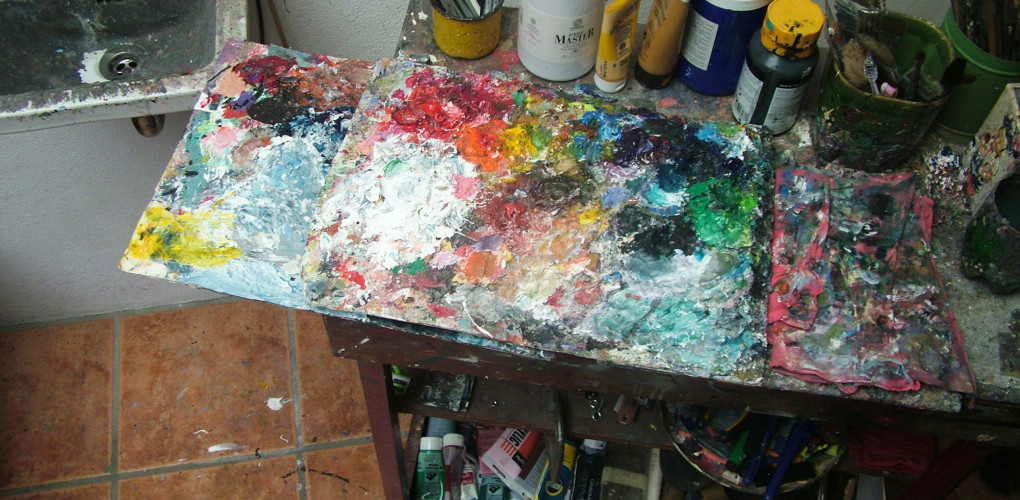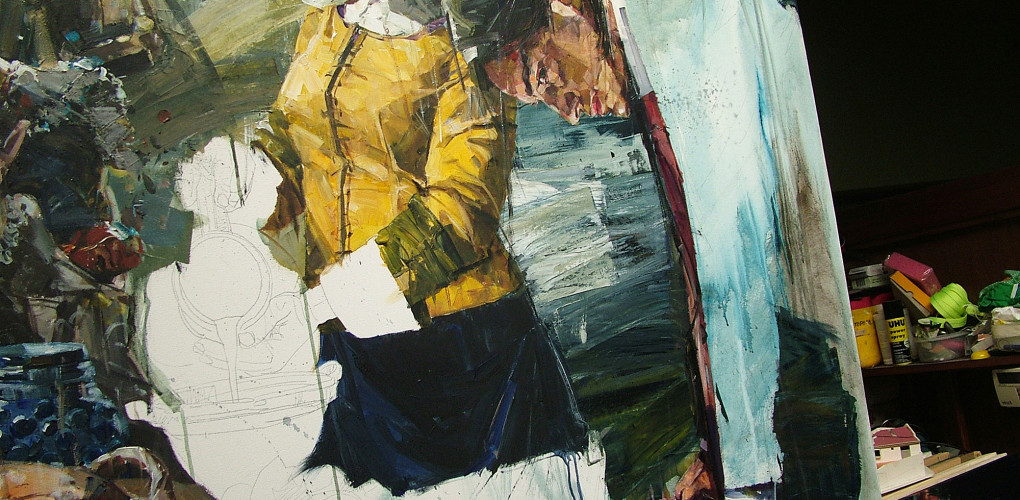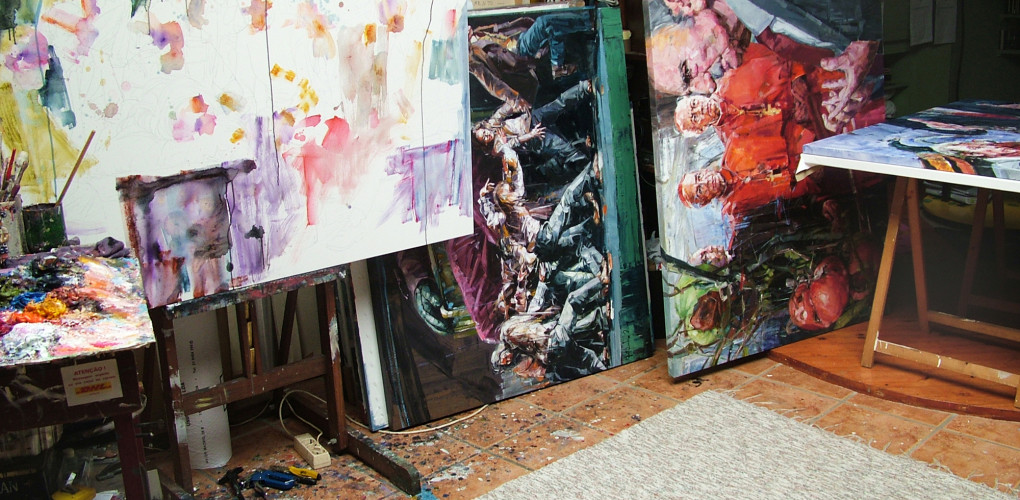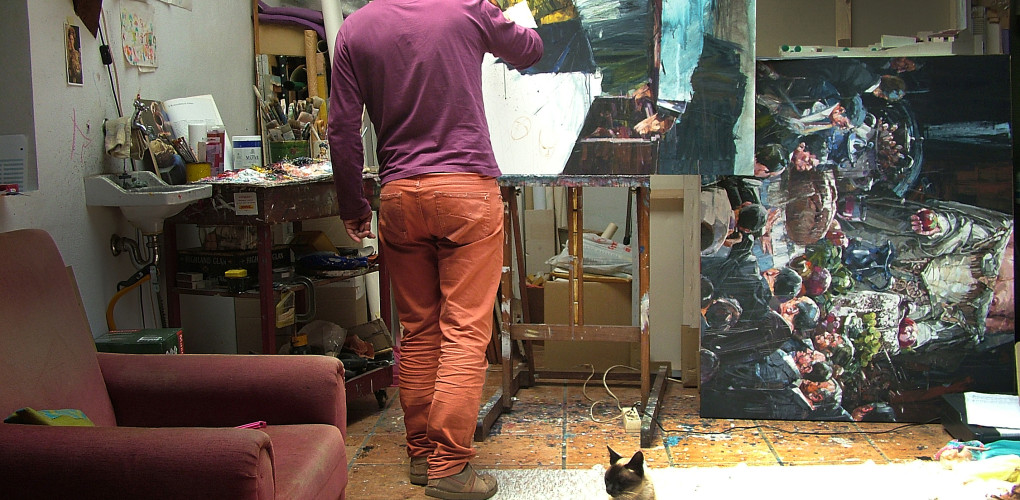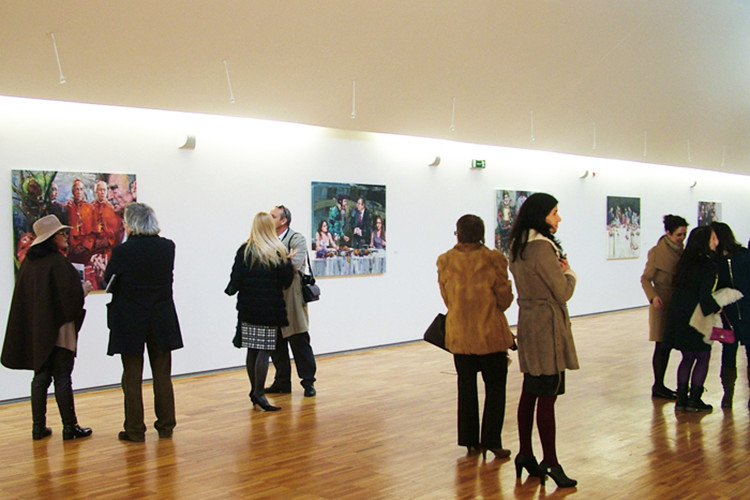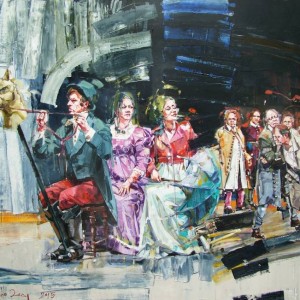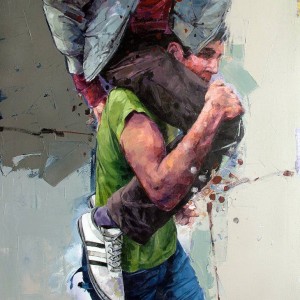Inside the Studio
 Martinho Dias
Martinho Dias
What are the major themes you pursue in your work?
My work is mostly figurative and my main theme is a social one, playing with society’s different powers and privileged social layers, mixed with a generous portion of irony and humour circling paradoxes.
My initial material and subjects are taken mainly from press media, art history and the internet. I am a manipulator and I am also an image/context ‘agitator’, contributing to reality new meanings and narratives. The photographic images are used as “models” to my pictorial compositions. What I do consists of removing several of today’s leading public figures of their comfortable sets offering in return, as often as possible, some degree of discomfort.
What was the best advice given to you as an artist?
My best advices always came from inside: work hard; be myself; do the best; be aware of my surroundings; be persistent; and, above all, never expect others to do the things that should be done by me. You see, I am travelling in a plane of existence of which I built for myself!
Prefer to work with music or in silence?
I like both. In certain stages of the work, especially in the beginning, there isn’t much room for music – I do not feel that it is necessary. From the time when the ideas begin to take shape when the work leaves the embryonic stage, this is when music can enter – in different genres. It works as a sort of celebration.
If you could only have one piece of art in your life, what would it be?
It would be a piece by Gottfried Helnwein, such as “The Child Dreams 6,” or “Lest you Forget”,
Who are your favorite writers?
It has been a while since I have had enough time to dedicate to reading as I would like to do. Furthermore, I must confess that one of my weaknesses is that I have the tendency to focus more on monograph and documentary readings. However, I can’t avoid mentioning the writers I’m most excited and enthusiastic about: José Saramago, Afonso Cruz, Valter Hugo Mãe, Paul Auster, Aldous Huxley, Jorge Luis Borges, and Italo Calvino.


